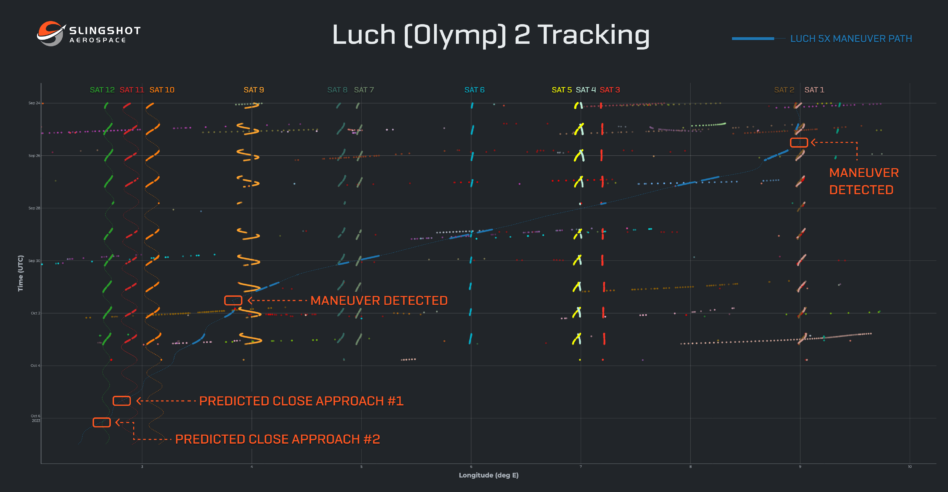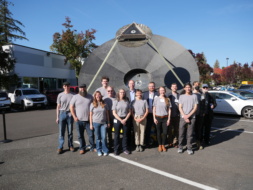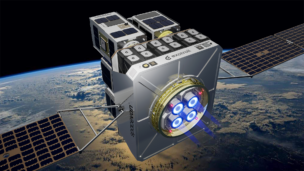GEO operators are on high alert after a Russian craft was spotted maneuvering around in orbit, presumably to take a peek at neighboring satellites.
Slingshot Aerospace, an Austin, TX-based space situational awareness company, released data yesterday that shows that the Russian-operated Luch (Olymp) 2 satellite, which launched in March, has been approaching multiple groupings of satellites in GEO.
- The most recent maneuver began Sept. 26 and sent the satellite moving at a rate of ~1°/day. The craft fired its thrusters again on Oct. 2 to slow to ~.3°/day near a cluster of unidentified sats.
It’s unusual for satellites in GEO to move around much. Usually, operators send their satellites there to maintain a position over a particular area of the Earth’s surface. Such frequent movement is a red flag to US authorities and satellite operators.
Repeating history: If this is giving you déjà vu, you’re likely thinking of Luch, the predecessor to Luch 2. In 2015, that craft maneuvered between two Intelsat GEO satellites, putting company leadership in crisis mode and sparking concern within the US government about Russia’s intentions with the satellite.
The US never took its eyes off of Luch after that. Between 2014 and 2020, US intelligence reported that the satellite occupied at least 19 different positions in orbit.
The theory that Luch was being used for counterspace activities gained strength after Russia’s invasion of Ukraine in 2021. A report from the Center for Strategic and International Studies released in 2023 found that the satellite’s behavior changed after the invasion, as it started to linger for longer periods of time around Intelsat’s birds.
What’s next? While Luch 2’s behavior right now is unusual, it’s not unheard of from the Russian program. Slingshot plans to continue monitoring the satellite’s behavior and tracking any future maneuvers across the GEO sphere.




